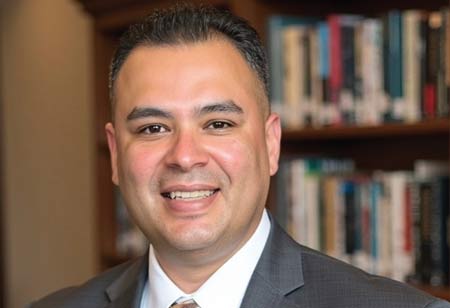Thank you for Subscribing to Healthcare Business Review Weekly Brief

From Detective to Director: Navigating Leadership, Trust and Innovation in Modern Nursing
Healthcare Business Review
Through this article, Ortiz shares his unique journey from law enforcement to nursing leadership, highlighting the invaluable lessons he carried from his career as a detective in patient care. He explores the evolving landscape of healthcare, emphasizing the rise of the educated patient, the balance between digital innovation and human-centered care and the importance of trust-building through communication and compassion. Focusing on leadership, staff engagement and patient experience, Ortiz underscores the critical role of fostering a supportive work environment to drive meaningful improvements in healthcare delivery.
From Law Enforcement to Nursing Leadership: A Unique Path to Patient Care
Nursing is a second career for me. Before Nursing, I worked for the New York City Police Department as a detective assigned to the Special Victims Division, where I specialized in the investigation of child abuse and sexual assault cases. It was in that work that I became interested in forensic nursing. I retired after twenty (20) years of service upon being accepted into my local university's nursing program and began the journey into my nursing career.
After graduating, I worked in the Raritan Bay Medical Center (RBMC) Emergency Department. RBMC is Magnet recognized for excellence in nursing service. They provided me with a strong nursing practice foundation and forged a blueprint that has supported my growth from novice nurse to forensic nurse to nurse leader, a capacity in which I've served for the past six (6) years. RBMC's Emergency Department is one of the Emergency Departments I lead as Director of Nursing.
Work on your golf game. More decisions are made on the golf course than in the boardroom.
The Rise of the Educated Patient: Adapting to Changing Expectations
Patients today are some of our most educated consumers. Computers and technological advancements have made it so that even those who are not tech-savvy can easily retrieve and research performance data about patient experiences. Patients utilize this information to help them decide who to choose to meet their healthcare needs and where to spend their healthcare dollars.
To meet shifting demands, healthcare organizations must ensure their leadership is strong and disciplined enough to work collaboratively, despite personal preferences, on initiatives that serve the greater good and with minimal disruption to patient care. This may sound simple enough, but it is challenging to achieve. It's easy to recognize organizations that are doing it, though. Those are our five (5) star leaders in patient experience.
Building Patient Trust Through Communication and Compassion
We can build and maintain patient trust through timely and honest communication. It shows we have empathy, and we genuinely care. Imagine yourself as a parent with a sick child in an Emergency Department and be everything you'd want your healthcare provider and nurse to be for you and your child. If you can do that, they'll pick you every time to meet their healthcare needs.
Balancing Digital Innovation with Human-Centered Care
Technology has brought us to places we've never dreamed possible of healthcare. Telemedicine and patient registration kiosks have helped throughput metrics, as we are seeing and treating patients in record times. But in this rush to outdo the previous quarter, we must be mindful of the importance of ensuring we're conducting thorough patient assessments that include their psychosocial needs and that patient discharge instructions are given at a level of their understanding.
Leveraging Patient Feedback for Meaningful Improvement
Reward and recognition. Recognizing and rewarding positive staff behaviors that maximize the patient experience is key to making those behaviors infectious among staff. We should celebrate their wins publicly. Concerning behaviors should be addressed privately while reiterating expected performance standards. We should monitor for patterns of unwanted behaviors and they should be addressed as appropriate.
Embracing Innovation Without Losing the Human Touch
Healthcare organizations should be preparing for increased patient use of telemedicine and its impact on the patient census. Big corporations have turned their attention to healthcare. They are utilizing advances made through artificial intelligence to offer virtual reality (VR) healthcare services, including the home delivery of prescribed medications at competitive rates. To compete, we must emphasize the marketing of human-centered care and put effort into meeting patient convenience needs and concerns.
The Key to Exceptional Patient Experience
They should understand that your staff is the most important part of ensuring an excellent patient experience. Your staff needs to know and trust you have their best interest in mind and that you support them. You have to include them in discussions that affect their workflow and you must consider their input. If they're unhappy with their working conditions or feel devalued, that will undoubtedly affect the patient experience. If you're dissatisfied with your work environment, being friendly and happy in your patient interactions is not easy. Take care of your staff and they, in turn, will take care of essential things for you. It is as simple as that.
And work on your golf game. More decisions are made on the golf course than in the board room.









